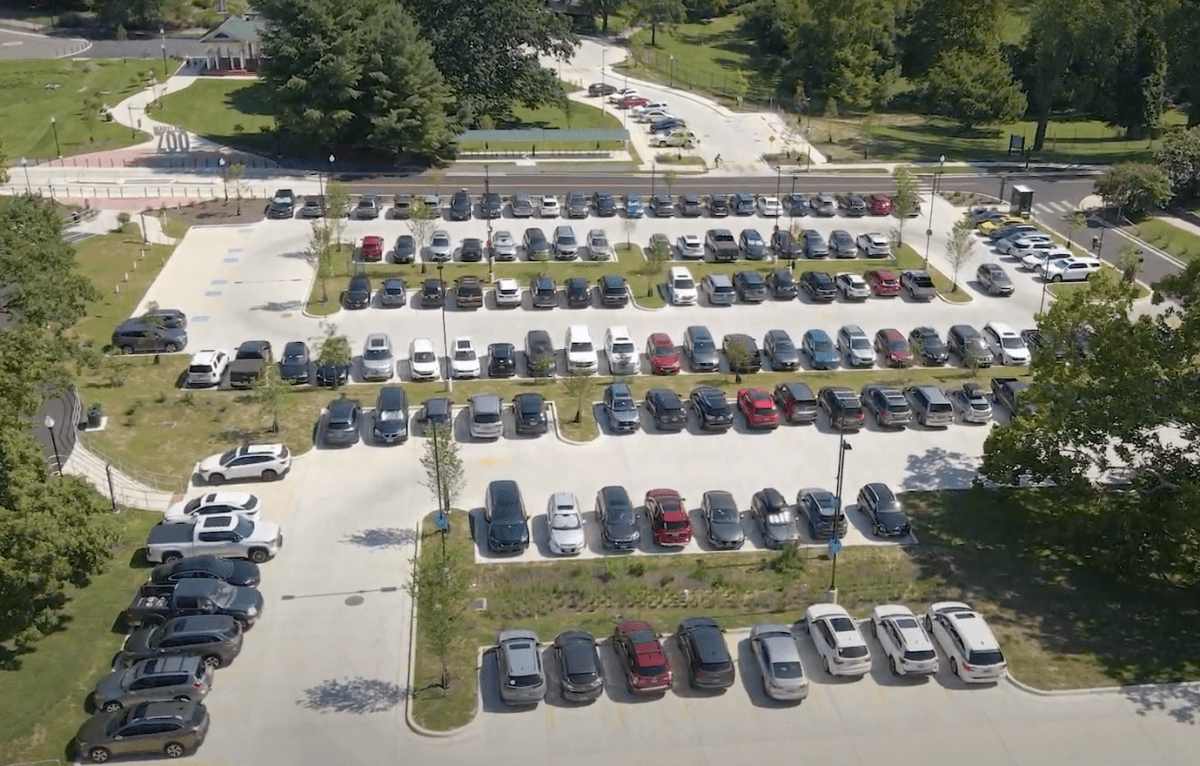Parking at the Maryland Zoo has historically been, well, a zoo. Until now, that is! The Zoo has completely overhauled its parking lot to provide what they’re calling a “superior experience” for guests, whether people drive, bike, or walk to see their favorite creatures and critters.
The new lot includes a variety of improvements, like a state-of-the-art system to filter and store rainwater in underground tanks, taking pressure off the Jones Falls during major storms. There are new signs directing and educating visitors about the Zoo’s conservation programs. The new elevated crosswalk improves pedestrian safety between the parking lot and the main entrance to the Zoo.
The concrete paving material used on the new parking lot is lighter in color, reducing the ambient temperature in the summer by as much as 10-15 degrees compared to asphalt on hot days. The downward-facing smart lighting decreases light pollution and electricity usage by dimming automatically when no one is around.

For Baltimore’s thriving bike community, there is new, covered bike parking with equipment to inflate tires and do minor repairs. The large number of newly-planted native trees have permeable paving and special aeration matting, protecting existing trees and promoting future growth.
“The previous parking lot surface had become too difficult to navigate and we wanted to have better water runoff controls,” said Kirby Fowler, Maryland Zoo President & CEO. “Our guests and visitors to Druid Hill Park let us know we needed to provide something better, and the new lot does just that.”
The new lot will reduce energy and water consumption and incorporate green practices into all facets of the Zoo’s management and operations, fulfilling part of their Sustainability Plan.

The brick pavers that covered the old parking lot were considered cutting-edge at the time they were installed in the 1970s. Their intended ability to allow rainwater to seep into the ground, though, deteriorated over the years, creating problems with rainwater runoff rather than solutions. The damage from potholes and ruts further made navigation difficult for anyone with a wheelchair, stroller, or even simply walking.
“The lot isn’t just better for motorists, cyclists, and pedestrians, the downward facing lighting makes it better for migrating birds, and the rainwater collection system makes it better for the environment,” Fowler said.


